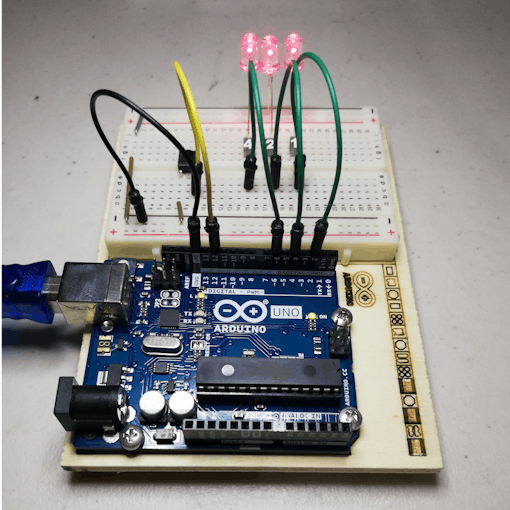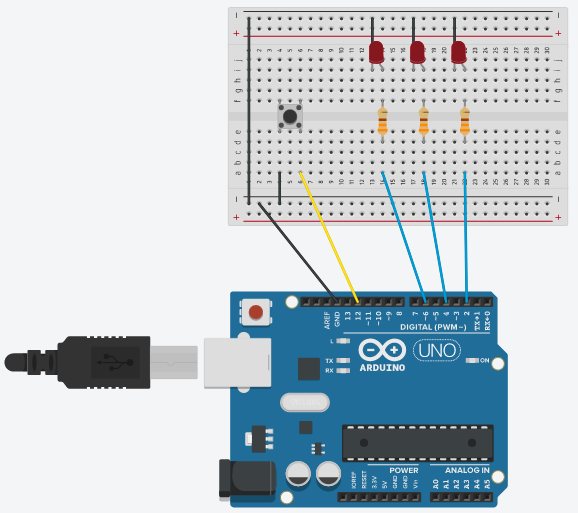Arduino Binary Dice © CC BY-NC-SA
DESCRIPTION
Maybe you have played ludo in this quarantine. I am almost sure that you use normal dice. Well, that is until today.
If you are a maker, I am pretty sure that the next time you play ludo you will use the binary dice that I present in this post.
You will only need an Arduino Uno and a few other components that I am sure you have.
It works is very simple. You only have to push the button and the LEDs show you the number. I use three LEDs to represent the number. If you do not know about binary, you only need to sum the number that appears below the LED or LEDs that are turned on.
I leave a video with an explanation about this project. I hope you know some Spanish.
I hope you enjoy this project. See you soon.
Maybe you have played ludo in this quarantine. I am almost sure that you use normal dice. Well, that is until today.
If you are a maker, I am pretty sure that the next time you play ludo you will use the binary dice that I present in this post.
You will only need an Arduino Uno and a few other components that I am sure you have.
It works is very simple. You only have to push the button and the LEDs show you the number. I use three LEDs to represent the number. If you do not know about binary, you only need to sum the number that appears below the LED or LEDs that are turned on.
I leave a video with an explanation about this project. I hope you know some Spanish.
I hope you enjoy this project. See you soon.



